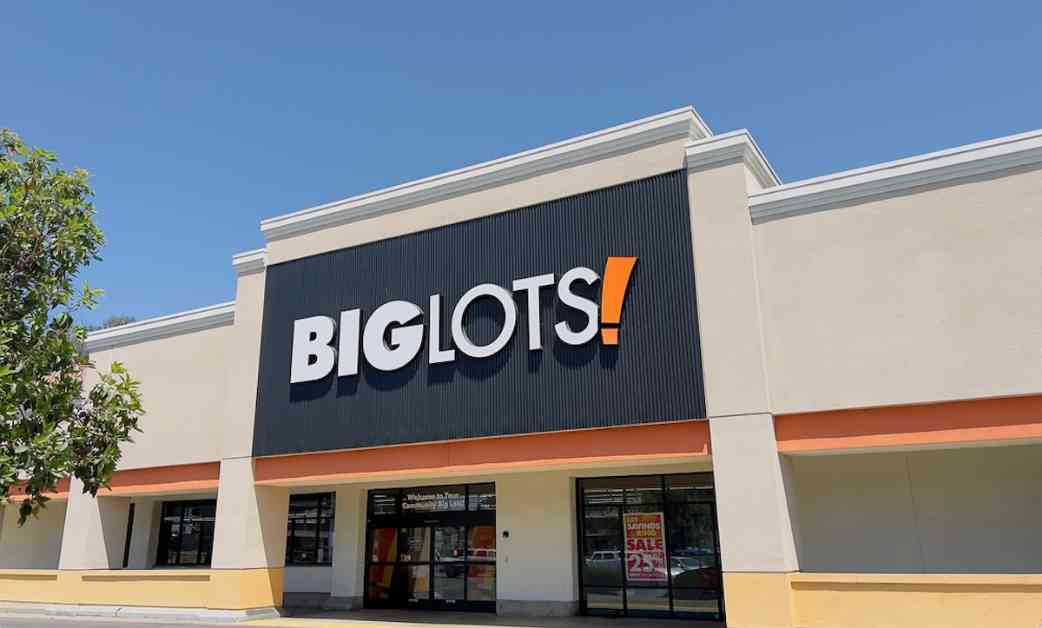Big Lots, a once prominent player in the retail discount landscape, is facing significant challenges as it navigates a Chapter 11 restructuring and prepares for acquisition by Nexus Capital Management. Retail analysts are closely examining the company’s business model and future prospects in light of the current market conditions. The bankruptcy filing not only exposes underlying issues within Big Lots’ operations but also highlights the economic pressures that are impacting its performance.
The Traditional Brick-and-Mortar Model
Sudip Mazumder, SVP, retail industry lead, North America at digital consultancy Publicis Sapient, points out that Big Lots’ traditional brick-and-mortar model, which heavily relies on closeout merchandise, has become less attractive to consumers in recent years. As the retail landscape evolves, customers are increasingly seeking convenience, variety, and unique offerings, which Big Lots has struggled to provide. The emergence of eCommerce and shifting consumer preferences have caught the company off guard, leaving it lagging behind its competitors.
Limited Online Presence
Mazumder also highlights Big Lots’ limited online presence as a contributing factor to its challenges. While the company does have an online store, it lacks the robustness and seamless integration with its physical locations that competitors like HomeGoods offer. This deficiency has hindered Big Lots’ ability to capitalize on the growing trend of online shopping, putting it at a significant disadvantage in an increasingly omnichannel retail environment. To remain competitive, Big Lots must adapt to this new landscape and enhance its digital capabilities.
Competition and Economic Pressures
The retail landscape is fiercely competitive, with discount retailers such as Dollar General and Dollar Tree, as well as online marketplaces like Amazon, offering lower prices and a wider selection of products. These competitors have drawn customers away from Big Lots, exacerbating the company’s financial challenges. The economic turbulence brought on by the COVID-19 pandemic has further compounded Big Lots’ woes, as consumers have become more cautious about their spending habits. As a result, Big Lots has experienced declining sales, store closures, and mounting financial difficulties.
The Future of Big Lots
The future of Big Lots remains uncertain, but Mazumder suggests that a potential lifeline could come from a private equity firm. An acquisition by a private equity firm could provide the resources and expertise needed to help Big Lots turn its fortunes around. However, the company will need to make significant changes to its business model and operations to adapt to the evolving retail landscape and meet the needs of modern consumers.
Consumer Behavior and Spending Trends
Greg Zakowicz, senior eCommerce expert at Omnisend, points out that consumer behavior and spending trends play a significant role in the challenges faced by retailers like Big Lots. As shoppers increasingly turn to value-focused stores like Walmart, companies that lack unique offerings and rely on discretionary goods may struggle to retain customers. With consumers tightening their belts and focusing on essential purchases, retailers must find ways to differentiate themselves and provide value to attract and retain customers.
Diversifying Inventory and Real Estate Portfolio
Big Lots has traditionally focused on discretionary categories like furniture, home decor, and apparel, which have seen a slowdown in spending. The company has been slow to invest in the grocery category, facing stiff competition from players like Aldi and Walmart. In response to changing consumer preferences and economic pressures, Big Lots may need to diversify its inventory and real estate portfolio. This could involve consolidating its store footprint, optimizing its distribution center model, and reassessing its product offerings to better align with consumer needs.
The Road Ahead for Big Lots
Despite the challenges it faces, Big Lots remains committed to serving its customers through its stores and online platform. President and CEO Bruce Thorn emphasized the company’s dedication to moving forward with new owners who believe in its business and provide financial stability. As part of its restructuring process, Big Lots will evaluate its store footprint, potentially closing additional locations, and optimizing its distribution center model. By making strategic changes and adapting to the evolving retail landscape, Big Lots aims to position itself for long-term success in a competitive market.
In Conclusion
Big Lots’ bankruptcy filing and impending acquisition by Nexus Capital Management shine a spotlight on the challenges facing the retail discount giant. From a traditional brick-and-mortar model that struggles to meet modern consumer demands to fierce competition from discount retailers and online marketplaces, Big Lots must navigate a complex landscape to secure its future. By addressing issues related to its business model, online presence, competition, and consumer behavior, Big Lots can position itself for success in a rapidly evolving retail environment. Through strategic changes, diversification of its offerings, and a focus on customer needs, Big Lots can overcome its current challenges and emerge stronger in the post-pandemic retail landscape.

















